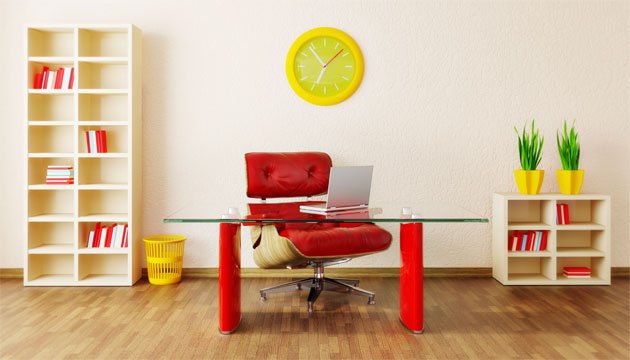
There’s no place like home, especially when you get to work there too. While others deal with frustrating commutes and noisy cubicles, you’re getting ahead and getting things done. Or are you? Without proper planning and organization, your home office may do more to hinder your productivity than enhance it.
In just 60-seconds, we can get you started on setting up the perfect home office.
0:60 Select the Right Spot
The space you choose for your home office should be well lit and properly ventilated, with enough room for furniture, supplies, storage compartments and other items you use on a regular basis. Windows are great for natural light and that all-important “inspiration,” but they can just as easily be a persistent distraction. It may be best to configure your work area so that the windows are behind you or to the side.
0:45 Get Connected
Your home office should also be equipped with sufficient electrical outlets to safely support your office equipment and appliances, as well as connections for your telephone, fax and Internet access. Any costs incurred to add outlets and any other utilities to your office (e.g., heating and air conditioning ducts) are tax deductible.
0:38 Fine-tune the Furnishings
Consider what kind of furniture you’ll need for your business, including file cabinets, printer stands and any other items needed to organize records, tools and supplies. Browse catalogs or measure furniture you already have and compare those dimensions with the available space in your office. This will make it easier to find an ideal layout without the risk of discovering too late that your new desk doesn’t fit.
0:23 Evaluate Equipment
Follow the same process with the equipment you will use, whether it’s a computer and a fax or machining equipment. You will almost certainly use some things less frequently than others, so consider ways to place these items so that they’re convenient, yet out of the way.
0:14 Organize
Avoid moving any business equipment or files out of your home office. You cannot afford to waste time tracking down misplaced tools or research information, especially when a deadline is near. And if customers visit your home office, an organized work environment will say a lot about you and the quality of your services. Even if you never have visitors, taking a few moments to straighten up at the end of the day gives you a head start on tomorrow’s tasks.
0:02 Watch those Taxes
The Internal Revenue Service will let you deduct expenses related only to that part of your home that you useexclusively and regularly for business. This includes the mortgage/rent cost of floor space, utilities and furnishings for areas where you actually perform your business and customer reception or meeting areas. You may also deduct expenses for parts of your home used as a daycare facility, or to store inventory you sell in your business—even if you sometimes use those areas for personal purposes as well. Consult the IRS Web site for details.
Article courtesy of SCORE.








